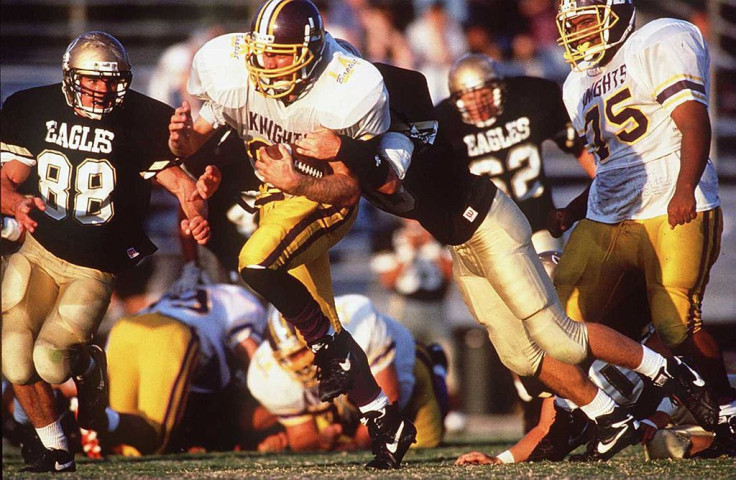Head Trauma From Playing Football Cause Brain Changes Even When There's No Concussion

There’s a growing concern regarding the safety of football since the competitive contact sport has the highest rate of concussions out of any competitive sport, according to a 2013 NFL-funded report. Now, new research published in the Journal of Neurotrauma found that repeated hits to the head, even if they don’t result in concussion, can result in significant changes to the brain.
Investigators from the University of Texas Southwestern Medical Center, Wake Forest University Medical Center, and Children's National Medical Center collected data from 24 high school varsity football players who wore helmets with sensors that recorded data on each head impact during all practices and games during a single football season. They also assessed brain changes using diffusional kurtosis imaging (DKI), which identifies changes in neural tissues to study brain development as well as brain injury. Ten players who experienced clinical concussion were excluded from the study.
"Studies like this are important to understand how and where long-term damage might be occurring, so that we can then take the necessary steps to prevent it," first author Dr. Elizabeth Davenport, a postdoctoral researcher in the Department of Radiology and the Advanced Imaging Research Center at UT Southwestern, said in a statement.
The DKI not only identified measurable changes in the neural tissues, it also allowed researchers to measure white matter abnormalities. White matter, which is found in the deeper tissues of the brain, consists of fibers that connect brain cells and it can speed up or slow down signaling between nerve cells. Damage to white matter may be a factor that limits the brain to restore connections following football-related head impact or injuries.
"Work of this type, combining biomechanics, imaging, and cognitive evaluation is critical to improving our understanding of the effects of subconcussive impacts on the developing brain," senior author Dr. Joseph Maldjian said in the statement. "Using this information, we hope to help keep millions of youth and adolescents safe when engaged in sports activities."
Past research has shown that the risk for head injuries and concussions for high school football players are similar to those seen at the college level. A 2013 analysis found that a high school football player is nearly twice as likely to suffer a brain injury than a college player. They suffered 11.2 concussions for every 10,000 games and practices, compared to college players who only suffered 6.3.
"Our findings add to a growing body of literature demonstrating that a single season of contact sports can result in brain changes regardless of clinical findings or concussion diagnosis," said Maldjian, chief of the Neuroradiology Division and director of the Advanced Neuroscience Imaging Research Lab.
Due to the small size of the study, researchers could not draw conclusions about whether certain player positions suffered more severe head injuries. The researchers said further research is needed to determine “what the deviations mean clinically for individuals.”
Source: Davenport E, Apkarian K, Whitlow C, et al. Abnormalities in Diffusional Kurtosis Metrics Related to Head Impact Exposure in a Season of High School Varsity Football. Journal of Neurotrauma . 2016.
Published by Medicaldaily.com



























